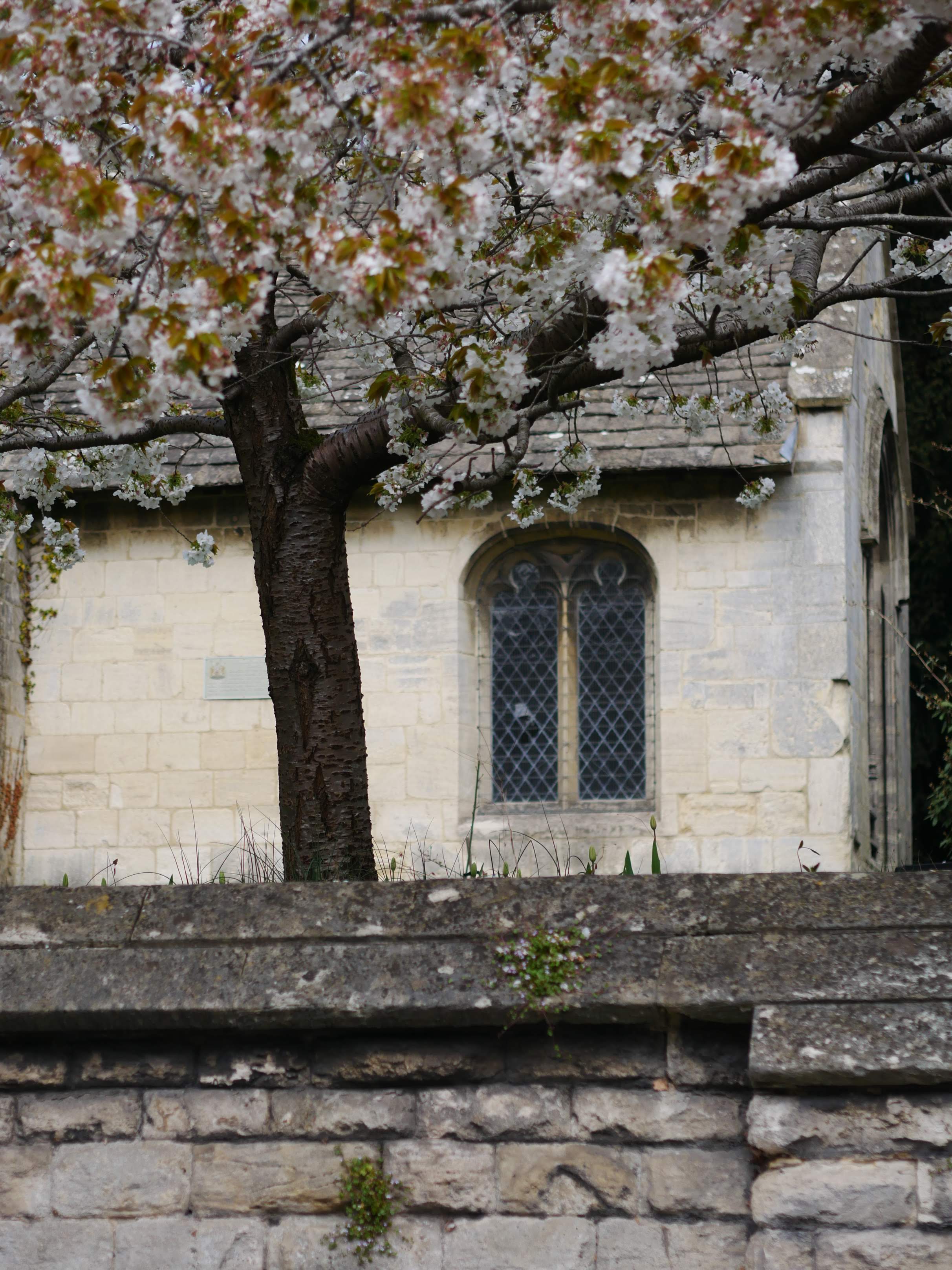
Discover more about the different buildings and sculptures around Hillfield Gardens:
- Hillfield House
- Scriven’s Conduit
- The King’s Board
- Chapel of St Mary Magdalen
- Sensory Garden Sculptures
Hillfield House

Hillfield Gardens were originally part of Hillfield House, a Victorian house built by Albert Estcourt in the Italianate style between 1867-69. The house has had many uses, including a hospital during WW1, the driving test centre, and finally, offices for Trading Standards. It is now privately owned.
Scriven’s Conduit



Scriven’s Conduit is an elaborate carved stone structure. It is made of ashlar limestone from Painswick. It is carved and moulded in the Jacobean style with Renaissance and Gothic influence. It was originally built in 1636, for Alderman John Scriven in Southgate Street as a conduit head over a piped water supply running from Robinswood Hill to the centre of Gloucester. It was removed from Southgate Street in 1784 and rebuilt in a garden in Dog Lane. In 1937, it was given to the city of Gloucester and rebuilt in Hillfield Gardens.
The King’s Board



The King’s Board is a small decagonal building. It is made of moulded ashlar stone with detailed carvings of scenes from Holy Week, including the journey into Jerusalem and the Last Supper. It was first erected in Westgate Street (near the entrance to Bull Lane), as a long rectangular building, possibly for the collection of taxes. Tradition claims it was presented to the city by King Richard II (1377-99). By 1580 it had become a butter market. In 1693, the top was converted into a cistern for drinking water pumped from the Severn.
It was dismantled during the road improvements arising from the Act of 1750 and re-erected in the gardens of Marylone House. These were used for the site of the new gaol in the 1780s, when the monument was removed to the grounds of a private house in Barton Street. In the mid 19th Century, it was brought by W. P. Price, who transferred it to his garden at Tibberton Court, where it stayed for 100 years.
In 1936, it was moved to Hillfield Gardens.
Chapel of St Mary Magdalene

The Chapel of St. Mary Magdalene is on the east side of the gardens. All that remains of the original church is the chancel of the Leper’s hospital chapel, founded around the 12th century. There are many carvings on the walls of the chapel, which may have been made by pilgrims. The symbols include a fleur-de-lys, a star of epiphany, symbols representing the Feast of the Cross, the feast of St. Valentine and All Saints’ Day. The nave of the chapel was demolished in 1861. At this time the south and west doorways were taken down and reassembled in the chancel. There is a life-sized thirteenth-century effigy, possibly of Saint Kyneburga, a Saxon princess.
Sensory Garden

The Sensory Garden was developed in 2013 with money from the National Lottery. The two sculptures in this area were designed by students from Denmark Road High School.
